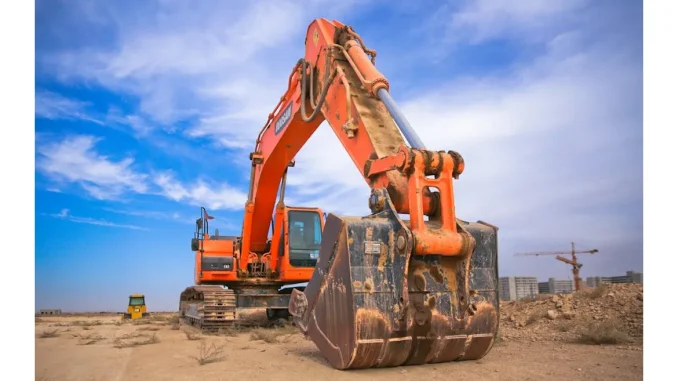
In the constantly evolving world of construction, demolition stands as a pivotal precursor to reshaping landscapes and facilitating new developments. From imposing skyscrapers to more modest structures, the act of dismantling buildings necessitates meticulous planning and execution to ensure both safety and efficiency. For commercial clients undertaking demolition projects, navigating the labyrinth of regulations and considerations becomes paramount to realising their vision.
Demolition transcends the mere act of destruction; it unfolds as a highly regulated process underpinned by laws akin to other construction endeavours. The Construction (Design and Management) Regulations 2015 (CDM 2015) are particularly pertinent, underscoring the critical importance of adhering to safety protocols and guidelines. Clients embarking on such ventures are strongly urged to consult with proficient demolition engineers before awarding contracts, thereby guaranteeing that the process is executed with the requisite expertise and precision.
Before demolition begins, local authorities must be notified a minimum of six weeks in advance. This early notification period allows for the assessment of potential risks associated with complex demolition jobs and the implementation of necessary safety measures to protect public welfare. In certain instances, road closures may be required to mitigate the severity of potential collapse risks, highlighting the importance of thorough planning and coordination.
Clients play a crucial role in ensuring that contractors are adequately prepared and informed for the task at hand. Providing contractors with a comprehensive refurbishment or demolition survey is essential, as it delineates critical information such as the presence of asbestos and live services on-site. Additionally, a competent demolition engineer should meticulously review the demolition method before work commences, ensuring that the process unfolds in a controlled and safe manner.
The demolition process itself is fraught with various considerations to guarantee the safety of workers and the public. Clearly defined exclusion zones and safe working spaces must be incorporated into the demolition plan, with their dimensions contingent on the chosen demolition technique and the surrounding structures. Scaffolding, designed specifically for demolition support rather than merely reducing exclusion zones, plays a vital role in maintaining structural stability during the dismantling process.
Throughout the demolition phase, maintaining structural stability is paramount to prevent unforeseen collapses. Duty holders bear the responsibility of ensuring worker safety and minimising the escape of dust and debris from the site. Workers operating at height should be safeguarded through the use of high-reach machines equipped with protected cabs, reinforcing the necessity for comprehensive safety measures throughout the project. The method and sequence of work must be carefully considered, taking into account the structural form and load paths of the building to avert uncontrolled collapses. Special attention must be given to elements such as arches and overhangs, which are particularly sensitive to stability.
Effective collaboration and communication among all parties involved are indispensable for a successful demolition project. Commercial clients, principal designers, contractors, site managers, sub-contractors, and site workers each hold specific responsibilities that collectively contribute to the overall safety and efficiency of the project. Detailed guidance on structural stability during alteration, demolition, and dismantling is readily available to support these efforts, ensuring that all aspects of the project are meticulously planned and executed.
For commercial clients, adherence to the stringent regulations governing demolition work is non-negotiable. The Construction (Design and Management) Regulations 2015 (CDM 2015) serve as the regulatory framework guiding compliance. To navigate this complex landscape, clients are advised to seek counsel from competent demolition engineers before awarding contracts, ensuring a thorough understanding of the requirements and responsibilities involved. Early notification of local authorities, six weeks prior to the commencement of work, is a critical step, enabling a comprehensive risk assessment and the implementation of necessary safety measures, such as road closures in high-risk scenarios.
Prior to initiating demolition work, clients must provide contractors with a refurbishment or demolition survey. This document ensures all parties are well-informed about the structural intricacies of the building, including the presence of hazardous materials like asbestos. A competent demolition engineer should scrutinise the chosen demolition method before work commences, advocating for a top-down approach that maintains control over the structure’s stability and debris spread.
The demolition plan must encompass precise exclusion zones and safe working spaces tailored to the chosen demolition technique and the surrounding environment. Scaffolding plays a crucial role in supporting structural stability during the demolition process. The method and sequence of work must consider the building’s structural form and load paths, with duty holders ensuring worker safety and controlling dust and debris escape. High-reach machines with protected cabs are essential for safeguarding workers operating at height.
Throughout the demolition process, public safety near the site must be prioritised through comprehensive risk management strategies. Party wall surveyors may address issues arising from demolition work, underscoring the interconnected nature of stakeholders in the construction ecosystem. Beyond immediate safety concerns, factors like structural stability, debris management, and proximity to other structures and services are integral to the demolition plan, ensuring a seamless and secure execution of the project.
The demolition method must be meticulously documented, focusing on preventing uncontrolled collapses and accounting for stability-sensitive elements like arches and overhangs. Unknown factors heightening collapse risks must be diligently assessed, with flexibility to alter the method if structural changes occur. Proximity to other structures and services necessitates proactive risk management and debris control. Clients must appoint contractors and designers with the requisite skills and experience, supported by detailed guidance on maintaining structural stability.
In the realm of demolition, the interplay between regulatory compliance, meticulous planning, and strategic execution is paramount. By adhering to established guidelines, seeking expert advice, and fostering a culture of safety and collaboration, commercial clients can confidently navigate the complexities of demolition work. This concerted effort ensures the successful completion of projects, paving the way for future developments built on a foundation of excellence and integrity.


Be the first to comment